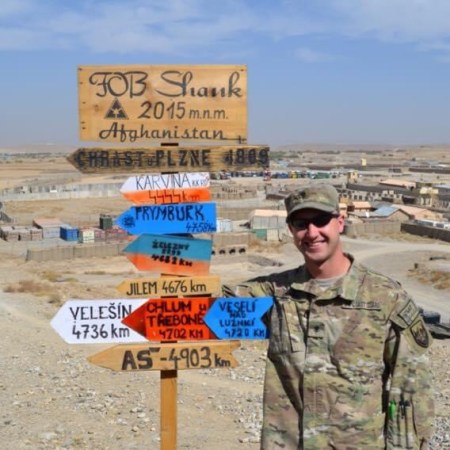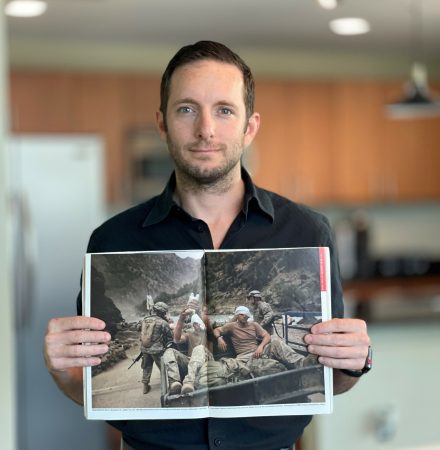A while ago, the Department of Defense issued a statement saying that in order to ensure our military remains at its strongest, any troop that’s been listed as non-deployable for 12 months or more will be removed from service.
On one hand, it’s reasonable to assume that the primary mission of troops is to deploy and engage the enemies of the United States. If a troop isn’t physically up to the task, then it’s time to let them go. And the policy isn’t coming down like an iron fist; there are a number of exceptions in play, including some for those on temporary non-deployable status for reasons like pregnancy or injury.
Now that the policy is in place, however, we’re starting to see how it’s affecting the overall combat readiness of troops. On paper, everything seems fine, but many unintended consequences are now hampering the troops.
For a full look at the policy, click here.

If not, many troops will try to fight their way into a Warrior Transition Unit.
(U.S. Army)
Many wounded troops will be unceremoniously given the boot
The exception for wounded troops we mentioned above is only applicable to troops who received injuries in combat. The policy is geared specifically toward sidelining troops who have endured prolonged injuries that have gotten worse over time or were sustained during training. It remains to be seen whether the policy protects troops who were injured outside of combat while deployed.
Since this directive is coming from the Pentagon level and any appeals will be made at the military service-level, expect troops who’ve served their country for years face an extremely uphill battle just to try and stay in. The debatable “positive” side of this is troops who’ve served long enough may be eligible for an early medical retirement.
If the appeals process were to be set at a much lower level, say, the installation level, then troops could present medical documentation in person, giving them a better chance to appeal.

At least the lines at sick call will be shorter…
(U.S. Air Force photo)
More troops will skip medical exams
Put yourself in the perspective of a lower enlisted. As it currently stands, you are seen as either weak or a discredit to your unit if you go to sick call. If your injury or sickness happens to fall anywhere near a unit run/ruck march, it’ll look like malingering. You’ve had bad experiences with the medics/corpsmen at sick call and you weren’t given the proper treatment. Now, to top it all off, if you go to sick call and get some bad news, there’s a chance your career is over.
The intention of the policy is to keep only the able-bodied troops who’re capable of withstand the hardships of a deployment — and that’s understandable — but the only way the Pentagon can keep tabs on who is and who isn’t eligible is through medical records. Troops who know something is wrong with their body will simply avoid sick call or medical if they want to stay in.
In order for this policy to be effective, there has to be better rehabilitation options available to troops. That 12-month deadline can remain in place, but only if the troop has proven that the previous fifty-one weeks weren’t getting them closer to the action.

The VA isn’t as much of a mess as it used to be and hopefully they don’t get complacent.
(U.S. Air Force photo by Sara Francis)
The VA will be even more backlogged
As with any change in policy, it’ll hit hardest at first and then taper off after a while. Currently, there are around 126,000 troops (six percent of all troops currently active, reserves, or guard duty) who face separation under this policy. It will hit the ranks pretty hard at first and then affect only a couple thousand or so per year after the initial impact.
All of these troops leaving the service simultaneously for medical reasons will immediately go to the already-overworked Department of Veteran’s Affairs, who currently serve 9 million veterans across their 1,243 health care facilities. If evenly dispersed, every VA center stands to receive 100 new applicants — but the system works by geographical location, so expect activity at metropolitan centers to surge. This is bad news for a department that currently has a backlog of 326,000 still-pending disability claims to deal with.
The Department of Veteran’s Affairs has gotten better recently, bringing that backlog down from 800,000 in just six years. The only thing they can do is prepare themselves for a massive surge of new appointments — good luck.

Someone’s gotta take care of things back stateside. That’s not a figure of speech or anything. We seriously need people back here to do the mission while others are deployed.
(Department of Defense photo by David Bedard)
Rear Detachment units will be inoperable
Not every single troop joins and then deploys when a unit heads overseas. Those responsible for staying behind and taking care of the home station are called the Rear Detachment, or Rear-D. These units are skeleton crews that take care of stateside logistics and handle any new and incoming troops that may arrive to the unit. While an entire battalion-sized unit is gone, maybe two platoon’s worth of troops will hold down the fort. Before this new policy, this is where you’d send the medically non-deployable troops, pregnant troops, and any new arrivals.
Under the new policy, a huge chunk of Rear-D troops are facing separation. Before the policy, it would have been easy to find a handful of troops and an E-7 with a bad back to take charge and keep the gears turning.
One of two things will now need to happen instead. Either a deploying unit will need to keep certain troops back home to handle Rear-D (and these troops would’ve otherwise deployed, thus taking able-bodied soldiers out of the fight and negating the intended effect of the policy) or stateside units will need to play a larger role for deployed counterparts, taking away from their current training mission.

But, as with all things, the policy will probably only be in effect for a few years before we realize the mistake and start letting anyone who wants in to join. I’m calling it now.
(U.S. Air Force photo by Master Sgt. Philip Speck)
The total number of troops affected will be far greater if the military keeps its path
An estimated 126,000 troops are currently on the chopping block. While we may never cut that many in a given year, there will be many more that are removed in the coming years.
The Army is planning on implementing a new PT test, one that features three events capable of causing injury if done incorrectly. A massive overhaul of Basic Training and Boot Camp is expected, making the experience far more intense, which will result in more injuries. An increased military presence overseas will result in more intense pre-deployment training, which is already resulting in more injuries with each passing year. Combine all of these factors with a civilian population that’s becoming less and less eligible to enlist, and the military is going to be shrinking way too fast.
This isn’t a problem that can be easily fixed. This is the fundamental problem with the Deploy or Get Out policy. The military is going to shrink beyond its already record-low personnel numbers.










